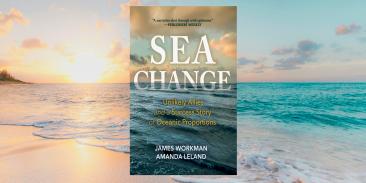Areas With Many Endangered Species May Soon See More
A new study has found that many of the same areas in the US currently considered “hot spots” for officially designated endangered species also have many unprotected species that could be designated endangered in the near future. These same areas are also prone to development, a major cause of endangerment. The study is featured in the current edition of Biological Conservation.
The study focuses on birds and butterflies, two of the best-known groups of animals. It highlights 19 counties as hot spots of vulnerability, containing 23 rare bird and 106 rare butterfly species (none of which are officially designated as endangered species). The study finds that areas currently containing the greatest number of protected endangered species also contain large numbers of unprotected species that have small ranges in the US and are therefore vulnerable to extinction. California, New Mexico, Texas, Florida, and Arizona contain large numbers of these unprotected vulnerable species, and are likely to undergo significant losses of natural areas in the future. These are some of the fastest growing areas in the US, and thus ripe for future conflicts between species and development.
“Not surprisingly, wildlife and people prefer the same regions of the country,” said Dr. David Wilcove, an Environmental Defense ecologist who co-authored the study along with Robbyn Abbitt (University of Idaho) and Dr. J. Michael Scott (USGS and Idaho Cooperative Wildlife Research Unit, University of Idaho). “The fact that many rare but unprotected species live in the very same places where our officially protected endangered species reside presents an opportunity for effective conservation. Ongoing efforts to preserve the habitats of protected endangered species should be expanded to include these unprotected but vulnerable species too. Two tools for protecting endangered species, Habitat Conservation Plans and Safe Harbor Agreements, should also be used to help unprotected and vulnerable species.”
Habitat Conservation Plans are required by the Endangered Species Act whenever a private landowner develops habitat for endangered species. Safe Harbor Agreements enable private landowners to voluntarily restore natural habitats for endangered species without incurring any additional regulatory restrictions.
“Habitat loss due to development and agriculture is the greatest threat endangered and vulnerable animals face,” said Dr. J. Michael Scott. “We need to continue protecting endangered species, but we also need to work to keep today’s unprotected vulnerable species from becoming tomorrow’s endangered species.”
With more than 3 million members, Environmental Defense Fund creates transformational solutions to the most serious environmental problems. To do so, EDF links science, economics, law, and innovative private-sector partnerships to turn solutions into action. edf.org
Latest press releases
-
COMING SOON: An effort to weaken our popular chemical safety law
December 8, 2025 -
Groups File Lawsuit Challenging Trump EPA Final Rule That Delays Methane Pollution Protections from Oil and Gas Industry
December 4, 2025 -
New Statewide Survey: As Electricity Demand and Costs Skyrocket, Arizonans Support Building More Wind and Solar Energy
December 4, 2025 -
Trump Administration Announces Plan to Weaken Fuel Economy Standards for Cars and Trucks
December 3, 2025 -
Trump EPA Proposal Lowballs Risk of Cancer-causing Formaldehyde
December 3, 2025 -
New York Finalizes Greenhouse Gas Reporting Requirements for Major Polluters
December 2, 2025










